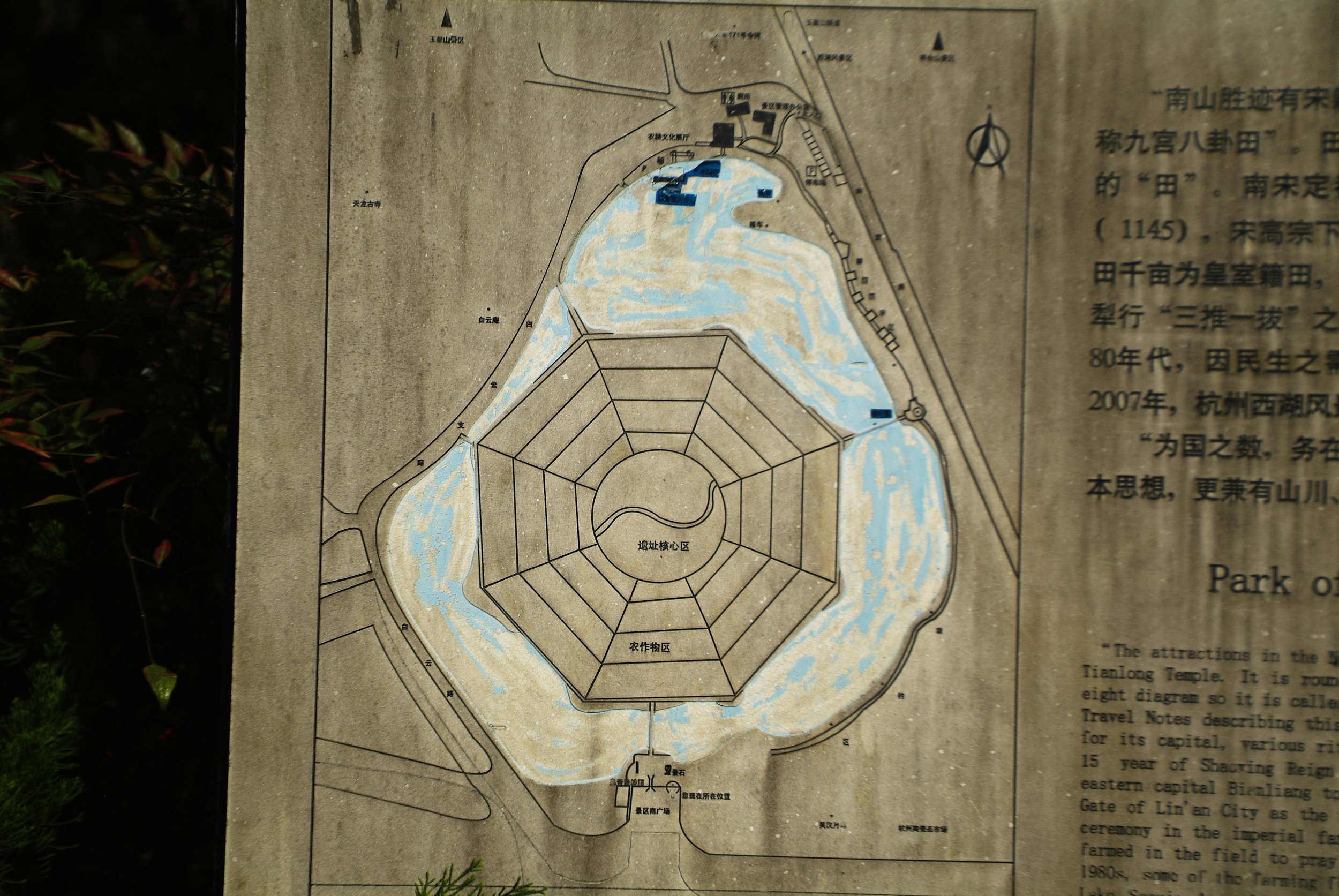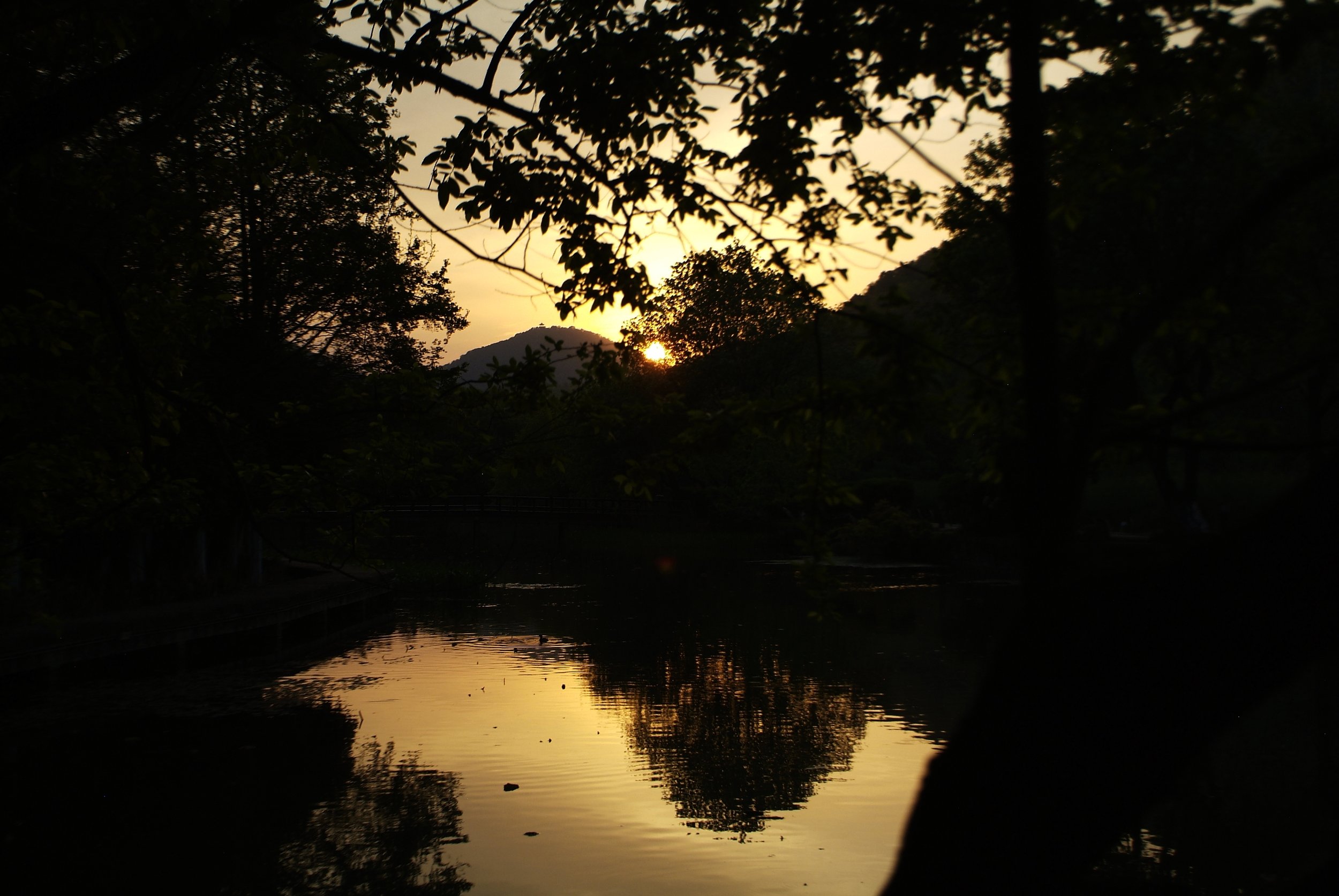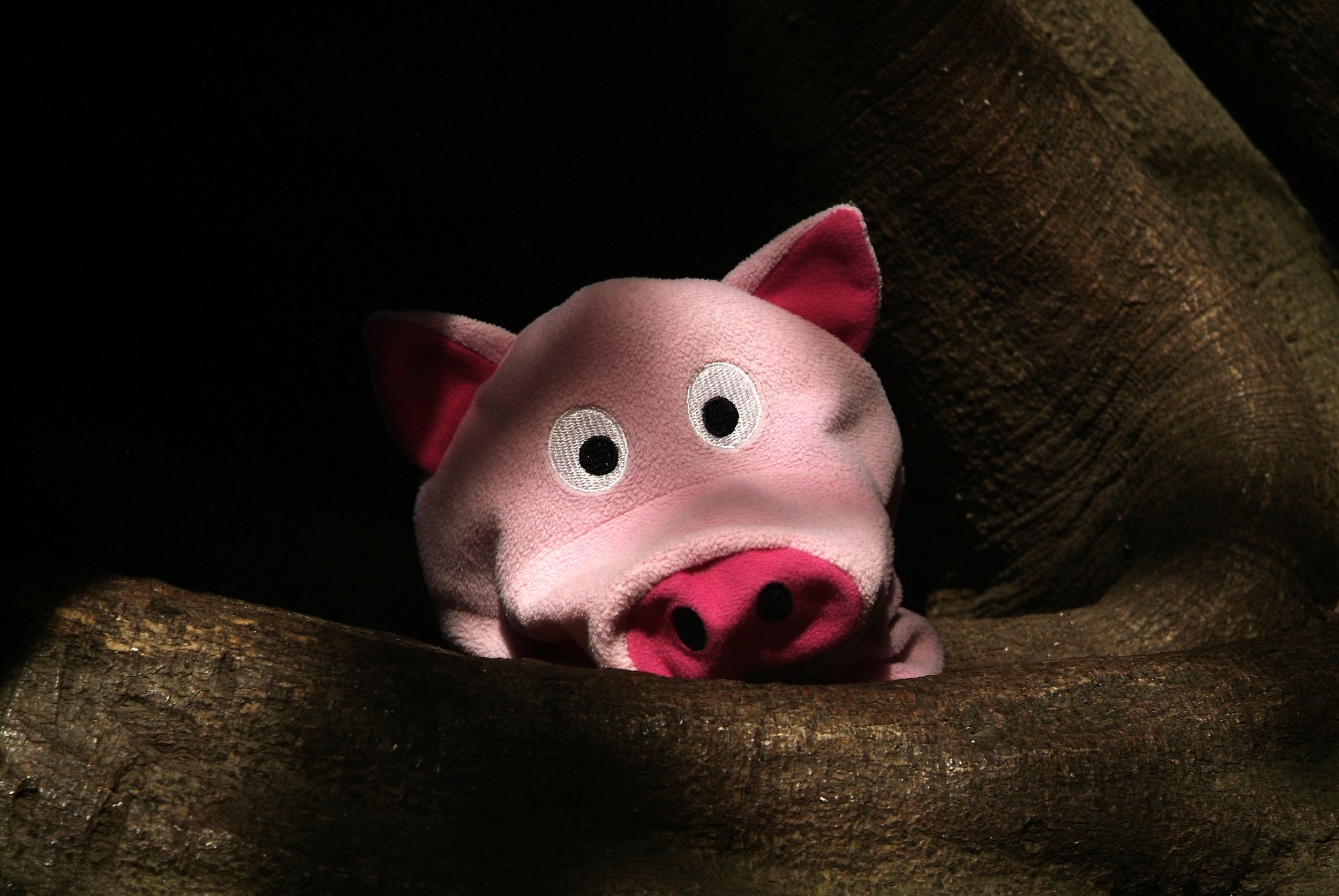
> TRAVEL FILES <
THE SIGN HUNTERS
@thesignhunters • #thesignhunters • #handfulsadventures • #apiginchina
CHINA: Hangzhou Explorations, 2: Eight Diagram Field and Jade Emperor Hill
Written by Laszlo, 28 April 2020; Last updated: 5 April 2020
The new post now carries on with the notable locations in Hangzhou series called “Hangzhou Explorations”. This time, I will take you to my favourite place that is also situated within one of the central administrative limits of the mega-city (Shangcheng District) in Yuhuang Shannan Fund Town (玉皇山南基金镇): this is Eight Diagram Field (Baguatian 八卦田). The hill surrounding and dominantly rise above 'the field' is known as Jade Emperor Hill (Yuhuangshan 玉皇山). So, this post today is broken up into two main sections. The first one will show you photos of Eight Diagram Field, the second one will take you on a virtual hike up to the top of Jade Emperor Hill. The reasons that these are not broken up into two different blog posts is because these two places are strongly connected – as you will see this connection in both the description and the photos below.
I originally discovered Eight Diagram Field by just looking at the Hangzhou city map. Even though we are talking about a relatively tiny area compared to the city's size, its unique octagonal (eight-sided) shape sticks out. When I saw it, all I said “Let's go there!”. It is located just at the southern foot of Jade Emperor Hill between the city's main water flow, Qiantang River, and the number one tourist attraction, West Lake.
Eight Diagram Field has a symmetrical octagonal shape and, thus, is made up of eight pieces of 'plots', with a mixture of trees symbolising the 'Yin and Yang' in the middle of it. According to One Word / Nations Online, "the octagonal trigram template is a common symbol for the term Bagua. The template has eight (ba) areas (guas), connecting two neighbouring corners of the octagonal trigram towards the centre to form one gua. The centre contains the yin and yang symbol, or taijitu as per taoist philosophy. Each of the ‘guas’ shows three yao symbols, stretching in three rows from the centre to the outer side. Each single yao symbol (line symbol) is either yin (陰 (阴); representing the receptive (female) force of nature, or yang (陽 (阳); representing the creative (male) force of nature."
At ground level, it is hard to distinguish between the 'guas' and it is also hard - though not impossible - to recognise the octagonal shape. That is why it is a good choice to walk up to the top of the Jade Emperor Hill from where there is a fantastic view over 'the field'. But from the top of the hill, one can see many more things including the famous landmarks of Qiantang River and West Lake. So, that is why Eight Diagram Field and Jade Emperor Hill are worth being mentioned together.
According to sources on the internet, Eight Diagram Field was formerly used for rituals by emperors to pray for good harvest. Today, the 'guas' are used to grow different crops during every season. We were lucky enough to go there for the first time on a nice, sunny, spring day (20 March 2020) when the rapeseed blossoms completely covered the fields in yellow. Within the past month, we have returned about five-six times as 'the field' has become my favourite spot in Hangzhou. We now aim to explore 'the field' and its surroundings even further. That is the reason we walked up to the top of Jade Emperor Hill (we walked it two times in three days!), and that is how we found the Jiangyangfan Eco park too of which we have already made a blog post (click here and check it out).
Jade Emperor Hill rises 239 meter above sea level and faces the West Lake in the north and Qiantang River in the south. It is upstanding and towering, it looks almost like a large pyramid. According to the local sources, the top of the hill sits very often in clouds or mist winding around its top, so that is why people call it Jade Emperor Flying Cloud or Mountain of Heavenly Father (玉皇飞云). 'The hill' itself has not only got a fantastic natural environment with dense forests covering its limestone rocks, but right at the centre, there is also a relatively large cave (Zilai Cave 紫来洞) with large caverns, which is able to hold about 200 people. It is a natural cave with stone carvings. The hill has also been home to a number of Taoist and Buddhist temples (such as Fuxingguan right at the top) that also include many beautiful stone carvings.
Eight Diagram Field (Baguatian 八卦田)
Yuhuang Shannan Fund Town (玉皇山南基金镇) The sign and graffiti with Jade Emperor Hill in the background
Eight Diagram Field (Baguatian 八卦田) at dusk
Jade Emperor Hill (Yuhuangshan 玉皇山) with stone carving and Zilai Cave (紫来洞)
Update (04.05.2020): On the 29th April, I went back to Eight Diagram Field, with the aim of walking Fenghuang Hill (凤凰山, meaning Phoenix Hill), which rises on the right side (easterly) from both Jade Emperor Hill and Eight Diagram Field. It was a great trip, so on Saturday the 3rd May, I went back there with Katie. On each day, a different route was taken, so the hill was better explored by us. This will, however, not be reflected much through the photos as I have managed to merge collection well. Since the hill forms a strong connection with its surroundings and environment, it is worth being mentioned in this blog post.
The hill rises up to 178 metres, lies between West Lake and the Qiantang River, and it forms a connection between Eight Diagram Field and Wu Hill, where the City God Pavilion is located. The hill has a series of peaks, many of which give you great views over the central part of Hangzhou. On the top of one of the peaks, there is an outlook pavilion from where you can see the City God Pavilion in a short distance. The main peak is located near 'the field', which makes a prominent appearance there with its steep cliff-side. The top of the main peak is flat but covered with trees, so there is no much view to enjoy but it is perfect for an afternoon picnic.
Have a look at the photos now. This update includes some shots of the southern edge of the Eight Diagram Field park too from where you can see the cone-shaped prominence of Phoenix Hill itself. Enjoy!










































































































































